TikTok and Instagram are powerful platforms for creating brand awareness, generating leads, building communities, and driving sales globally.
TikTok has over 1.6 billion active monthly users while Instagram has 2 billion active monthly users. TikTok users spend approximately 197.8 million hours daily watching videos on the app, while on Instagram users spend 17.6 million hours on the platform.
Both apps have distinct strengths and audience demographics. While choosing the right platform for your business can be challenging, this detailed comparison guide equips you with all the information you need to decide.
Learn about TikTok vs. Instagram:
- Key features and content formats
- Audience demographics and preferences
- Ranking algorithms
- Social commerce capabilities
Let’s dive in!
TL;DR: Your Instant Guide to TikTok vs. Instagram
Here’s a quick comparison of TikTok and Instagram for social media marketing:
| TikTok | ||
|---|---|---|
| Audience demographics | Over 50% of its user base are Gen Z, with ages ranging from 18-24 years old | 61.8% of users is a mix of Gen Z and Millenials, with ages ranging from 18-34 years old |
| Platform algorithm | The TikTok algorithm prioritizes user behavior like watch time, video completion rate, video shares, saves, favorites, and likes. | The Instagram algorithm considers likes, comments, saves, and past user interactions with your content |
| Content formats | Short-form videos ranging from 15 seconds long to 10 minutes long TikTok Live Stories Photos | Photos Short feed videos Carousels Instagram Reels (similar to TikTok videos) Stories and Story Highlights IG Live |
| Content types | TikTok users often post raw and authentic videos with in-app visual and audio effects. Popular content includes lip-syncing videos, dances, TikTok challenges, behind-the-scene footage, trends, and Duets | The Instagram algorithm favors polished content with high-quality visuals and edited videos. Popular content types include well-edited photos, infographics, educational content slides, tutorials, product unboxing videos, user-generated content, posts with universal aesthetics or branding, and lifestyle-related content |
| Analytics and reporting features | Provides insights into video views, likes, shares, and follower growth. | Provides more comprehensive insights into follower demographics, post reach, impressions, and engagement metrics |
| Social commerce capabilities | Offers Live shopping, influencer marketing, branded hashtags, and TikTok Shop. | Offers shoppable posts, influencer marketing, Live shopping, and branded hashtags. |
Understanding TikTok and Instagram: How the Platforms Differ From Each Other
TikTok was launched in 2016 and is the fifth most popular social media platform focusing on short-form video content.
TikTok users can create and share videos ranging from 15 seconds to 10 minutes long. The platform features include built-in music libraries, filters and effects, and editing tools that can help you craft engaging video content.
Content discovery on TikTok is algorithmic, presenting users with continuous videos tailored to their interests and watch history.
On the other hand, Instagram has grown from a photo-sharing platform to a multimedia powerhouse. It is currently the fourth most popular social channel, ranking behind Facebook, YouTube, and WhatsApp.
Instagram offers creators a comprehensive toolkit for short-form and long-form content. The platform prioritizes a curated feed, allowing users to follow specific accounts and explore content aligned with their preferences.
Let's explore both social media channels and what they can do for your business.
1. Audience Demographics and Platform’s Reach
Understanding each platform's user base is crucial for maximizing your reach and engagement.
Here is a breakdown of TikTok and Instagram audience demographics:
Age: The largest demographic on TikTok is Gen Z (18-24 years old), constituting over 50% of its user base. Millennials (25-34) are also well-represented on the platform.
Instagram, however, boasts a wider age range of users, 61.8% of whom are between 18 and 34 years of age. But the platform also attracts a healthy contingent from older demographics.
Geographical presence: TikTok enjoys a strong presence worldwide, with a significant user base in Asia, North America, Africa, and Europe. Similarly, Instagram boasts a vast global user base.
Both platforms’ user base penetration differs across regions depending on internet availability and affordability.
User interests: Short-form videos dominate on TikTok like trending challenges, viral dances, funny skits, and creative storytelling. Humor and creativity perform well on the platform.
On Instagram, users are receptive to a wider range of interests like travel inspiration, lifestyle updates, and glimpses into influencers’ lives. Informative content, product demonstrations, and aesthetically pleasing visuals perform well.
Understanding the audience demographics of each platform can help you:
- Target the right audience for your business.
- Tailor your content to fit the platform's strengths, for instance prioritizing short and engaging videos with trending sounds on TikTok.
- Consider regional variations and content preferences within your target market.
2. Platform Algorithms and User Engagement
An algorithm is a set of instructions that determines the content on your user timeline. Both TikTok and Instagram leverage complex algorithms to curate content for individual users.
The TikTok algorithm prioritizes user behavior.
It analyzes factors like watch time, video completion rate, video shares, saves, favorites, and likes to determine which content appears on the For You Page of each user.
Videos with high initial engagement signals are shown to a wider audience.
Beyond user behavior, the algorithm considers hashtags, captions, sounds, and video effects.
Using trending elements and optimizing your content for discoverability can significantly boost the reach of your TikTok videos. For example, if you create an engaging video using a trending song, your content will likely reach more people.
Language preferences are also a factor in TikTok recommendations, although they are less influential.
TikTok's algorithm prioritizes creative content that keeps users glued to their screens. It's no wonder that the average TikTok user spends more time on the app daily than any other platform.
| Social Media Channels | Average Time Spent Per Day (in Minutes) |
|---|---|
| TikTok | 95 |
| YouTube | 74 |
| 51 | |
| 49 | |
| X | 29 |
| Snapchat | 21 |
This presents a unique opportunity for creators. Even new accounts can go viral if you produce high-quality engaging videos. Use pro video tools like WeVideo or InVideo to improve quality.
Instagram's algorithm considers likes, comments, saves, and past interactions when deciding which content to show in the users’ feeds. It also considers your post’s performance metrics like reach and engagement rate.
High-quality content reigns supreme on Instagram.
Users prefer visually appealing photos, well-edited videos, and engaging captions that spark conversation and encourage user interaction.
Content published recently has a higher chance of appearing on user feeds than older posts. That’s why many content marketers suggest posting once per day on Instagram.
Instagram displays content that users are likely to enjoy based on their past behavior and interactions on the Explore page. This can make it more challenging for new creators to gain traction on Instagram as compared to TikTok.
However, creating polished content with photo editing and collage apps like Photoleap can help boost your content’s reach.
3. Content Formats and Types
Quick, engaging content with viral potential excels on TikTok.
However, if your marketing strategy focuses on brand storytelling, showcasing products, and fostering a loyal community, Instagram offers a more versatile toolbox.
The popular content formats and types on TikTok and Instagram differ significantly, as shown in the table below.
| TikTok | |
|---|---|
| The use of trending sounds, challenges, and dances boosts content discoverability and engagement. | The use of high-quality photos and videos with a strong aesthetic is essential for grabbing attention. |
| Users expect quick bursts of entertainment, information, or inspiration. | You can use captions and storytelling techniques to build a connection with viewers. |
| Authenticity, humor, and raw creativity often resonate more with TikTok users. | The use of highly polished videos and photos with filters and hashtags is essential for building a follower base. |
| Content is mostly short-form videos ranging from 15 seconds to 10 minutes, TikTok Live, Stories, and photos. | Content is a combination of static photos, videos, Instagram Reels, carousels, disappearing Stories, Story Highlights, and IG Live. |
The ideal content format depends on your goals. You must adapt your format for each platform to maximize reach and engagement.
You can use online video creators like InVideo or the Videoleap app by Lightricks to repurpose content from TikTok to Instagram and vice versa. This will help you create content that fits each platform's stylistic preferences and audience expectations.
4. Unique Marketing Features for Content Creators
Both TikTok and Instagram offer robust features to empower marketers and content creators.
Unique TikTok features for growth include:
- Extensive library of sound clips, songs, and effects that you can incorporate into your videos to enable creativity and viral trends.
- Duet and stitch features allow you to collaborate with other creators by either splitting the screen to create a duet or incorporating someone else's video into your own through stitching.
- For You page algorithm for trending content is tailored to each user's interests, providing opportunities for organic reach and going viral.
- A self-serve advertising platform with various ad formats, including in-feed ads, branded filters, and hashtag challenges, enabling businesses to reach their target audience and drive engagement.
- Sponsored hashtag challenges to encourage user-generated content around your products or brand.
Unique Instagram features for marketers and content creators include:
- Instagram Stories to share temporary content including photos, videos, text, and interactive elements like polls and quizzes.
- Instagram Reels for short-form video content set to music, similar to TikTok.
- Instagram Ads where you can pay for photo ads, video ads, and carousel ads with advanced targeting capabilities to reach specific audiences and achieve marketing objectives effectively.
Both platforms offer analytics tools. Instagram provides comprehensive insights including follower demographics, post reach, impressions, and engagement metrics, whereas TikTok analytics focus more on video views, likes, shares, and follower growth.
5. Influencer Marketing on TikTok vs. Instagram
Influencer marketing is effective on both platforms. However, influencer partnerships on TikTok are more organic and challenge-driven, while Instagram users often create sponsored branded content with the Paid partnership label and Story takeovers.
For example, Sony Alpha partnered with photographer Scott Kranz, to promote their new 300mm lens.
You can partner with influencers to promote your products to their followers, enabling you to expand your community on TikTok and Instagram.
5. Social Commerce Capabilities
Social commerce is growing rapidly and is expected to hit target revenue of $200 billion annually in the U.S. in 2024. Both TikTok and Instagram have customized tier features to promote commerce and provide a smooth shopping experience among their users.
TikTok and Instagram allow creators to include shoppable links in their bios, directing users to external storefronts.
They also provide:
- Branded hashtag challenges: You can incorporate product use, encouraging user-generated content that shows products in action and drives brand awareness.
- Influencer marketing: Partner with influencers to create product reviews, tutorials, or challenge videos that organically promote your offerings.
- Live shopping: You can host Live streams to showcase products, answer questions in real time, and create a sense of urgency to drive sales.
Currently, Instagram excels at creating shoppable posts and Stories. You can tag products directly within your posts and Stories, allowing shoppers to seamlessly navigate from browsing to purchasing within the app.
TikTok also has a similar platform known as TikTok Shop. It allows you to create a dedicated shop section on your profile, showcasing your product catalog with detailed descriptions and purchase options.
Here is an example of a TikTok Shop:
In terms of social commerce functionalities, Instagram's features might be a better fit. The platform has more robust functionalities that can drive immediate conversions and in-app purchases.
On the other hand, TikTok is a powerhouse for creating viral trends and excitement, which can boost brand awareness and ultimately lead to sales down the line.
6. Challenges and Limitations of Using Each Platform
Both TikTok and Instagram offer immense potential for creators and businesses. They also come with unique challenges that have to be navigated well to get the most out of each platform.
For example:
- It is now getting difficult to make your content go viral with the vast amount of content uploaded daily by other users.
- TikTok's strict community guidelines restrict certain content types, requiring creators to adapt their strategies.
- Instagram's algorithm focuses on user behavior, making it challenging for new accounts with few follower bases to gain traction.
- Keeping pace with Instagram's ever-changing algorithm is demanding, requiring constant adjustments to content strategy.
- Both platforms limit video length, requiring creators to tailor their messages within specific constraints.
- Both have a strong entertainment focus, which limits some brands and creators especially when the idea of amusement is not aligned with their brand personality.
Despite these limitations, both platforms offer monetization options such as:
- Brand partnerships: You can collaborate with brands on sponsored content or product placements.
- Affiliate marketing: You can promote other companies' products and earn commissions on sales generated through your unique affiliate links.
- Sell products or services: Direct users to your online store or promote your services through compelling content and Live streams.
Consider the resources you can dedicate to content creation, your brand voice, and your target audience to decide which platform offers the best opportunities.
Choosing the Right Platform for Your Business Goals
Having explored TikTok and Instagram's features, strengths, and limitations, you must ask yourself which platform best aligns with your goals.
When selecting the appropriate platform based on your business objectives, consider the following factors to align with your goals effectively:
- Brand awareness: Determine which platform offers better brand visibility and exposure opportunities. TikTok's algorithm-driven content discovery can rapidly increase brand visibility through viral content.
- Creativity: Assess which platform better suits your brand's content style and creative objectives.
- Community building: Determine which platform facilitates stronger community engagement and interaction with your target audience.
Instagram's features like comments, direct messages, and tagging allow you to build deeper connections with followers. TikTok's duets, challenges, and trends encourage user participation and interaction, building a community around your brand. - Conversions: Evaluate which platform drives better sales for your products or services. Instagram's shopping features, such as product tags and the “Shop” tab, make it easier for users to discover and purchase products directly from the platform.
TikTok also offers an option to set up a TikTok Shop, featuring your products. However, TikTok is banned in regions like India so if your target audience is only located in those regions, TikTok Shop might not be a good fit for your brand. - Brand authenticity: Consider which platform allows for authentic brand identity. Instagram's emphasis on curated content and aesthetics may suit brands aiming for a more polished image. See Glossier’s Instagram feed aesthetics for example:
In contrast, TikTok's emphasis on real-life moments can help you connect with audiences on a more personal level.
- Analytics: Assess each platform's analytics and measurement capabilities to track your marketing efforts' effectiveness. Both Instagram and TikTok offer insights into metrics such as reach, engagement, impressions, and demographics. Evaluate which platform provides the data and insights you need to optimize your marketing strategies.
- Competition: Analyze the competition on each platform within your industry. Assess the presence of competitors, influencer activity, and audience engagement levels to gauge the platform's potential impact on your goals.
- Resources: Consider the resources available for content creation, management, and advertising on each platform. Evaluate the time, budget, and personnel required to maintain a consistent presence and achieve desired results.
Be open to experimentation and iteration based on performance data and audience feedback. Test different content strategies, formats, and platform features to optimize your approach over time and adapt to evolving trends and preferences.
Many successful brands use both platforms for social media marketing.
You can use TikTok to generate buzz and use Instagram to nurture deeper audience relationships and promote product sales.
Take a look at Target's social media pages. They use TikTok mainly for UGC content and product reviews, and Instagram to showcase products and offers.
TikTok vs. Instagram: Which is the Ideal Platform for You?
TikTok offers you a platform to try out viral trends and short-form creativity while Instagram allows you to delve into visual storytelling and explore diverse content formats. Both platforms offer photo and video-sharing features that you can leverage to engage your audiences, build brand awareness, and drive results.
Choose the platform that best aligns with your unique goals, target audience demographics, and content style preferences. Perhaps you'll succeed on just one platform, or maybe leveraging both will be better for your brand.
Which platform resonates more with you, and why? Share if you have discovered unique social media marketing strategies for success on either TikTok or Instagram with a comment below.

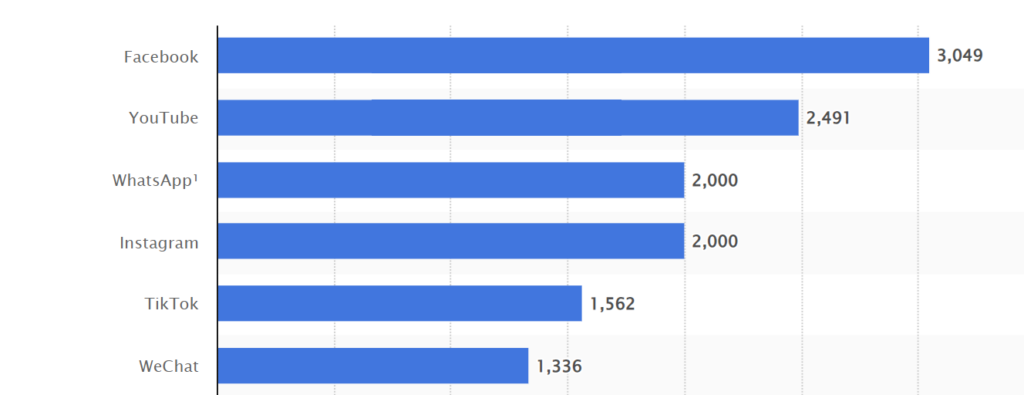
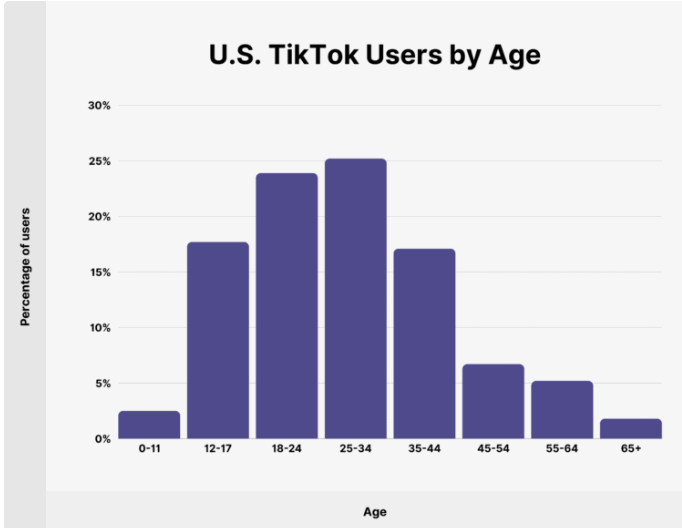
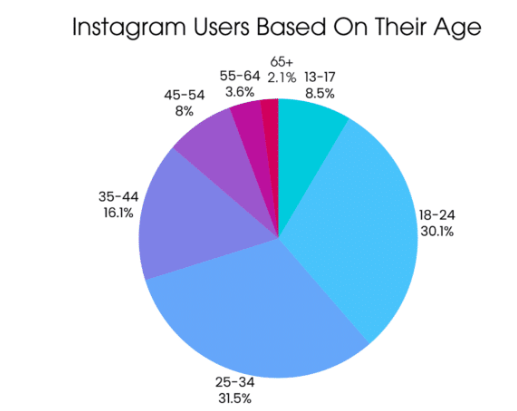
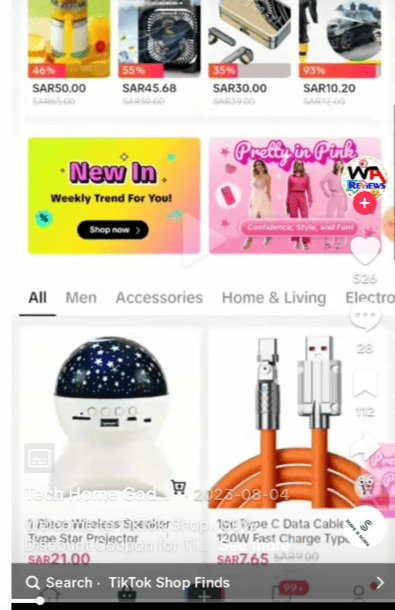
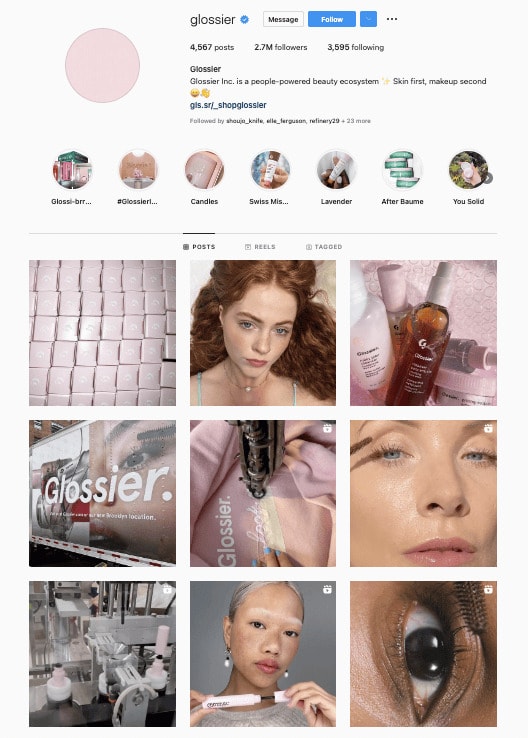
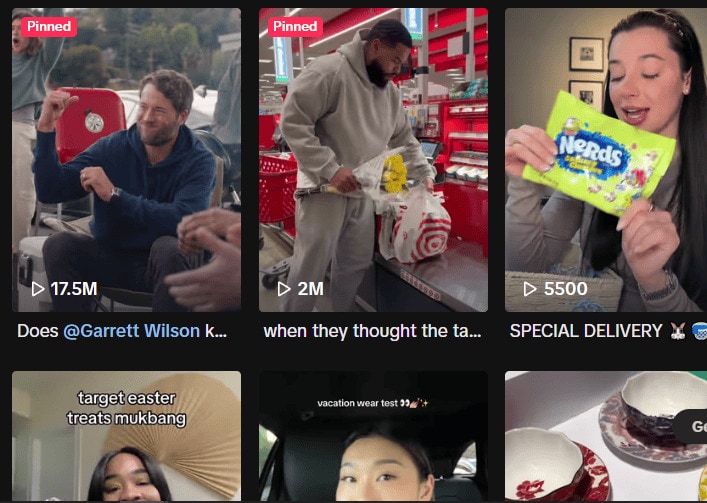


Related Articles
The Right Time to Post on Social Media: A Reliable Guide
7 Best B2C Marketing Channels for Social Media in 2024
How to Grow Social Media Organically: 19 Tools You Need To Use in 2024
30 Best Social Media Marketing Tools in 2024
7 Social Media Analytics Best Practices You Should Follow
19 Best Social Media Management Tools for Marketers in 2024